Border Collie

Descendants of the British Isles, Border Collies are consistently named first in every list of intelligent dog breeds. Border Collies are bred to serve as livestock herders; however, their superior cognition abilities, extreme athleticism, and friendly nature have made them the top contenders in various dog sports and cherished companion pets. And though owning a highly intelligent dog might sound tempting, Border Collies need a lot of physical and mental exercise. So, before getting a puppy, be sure you’ll be able to meet its needs.
Golden Retriever
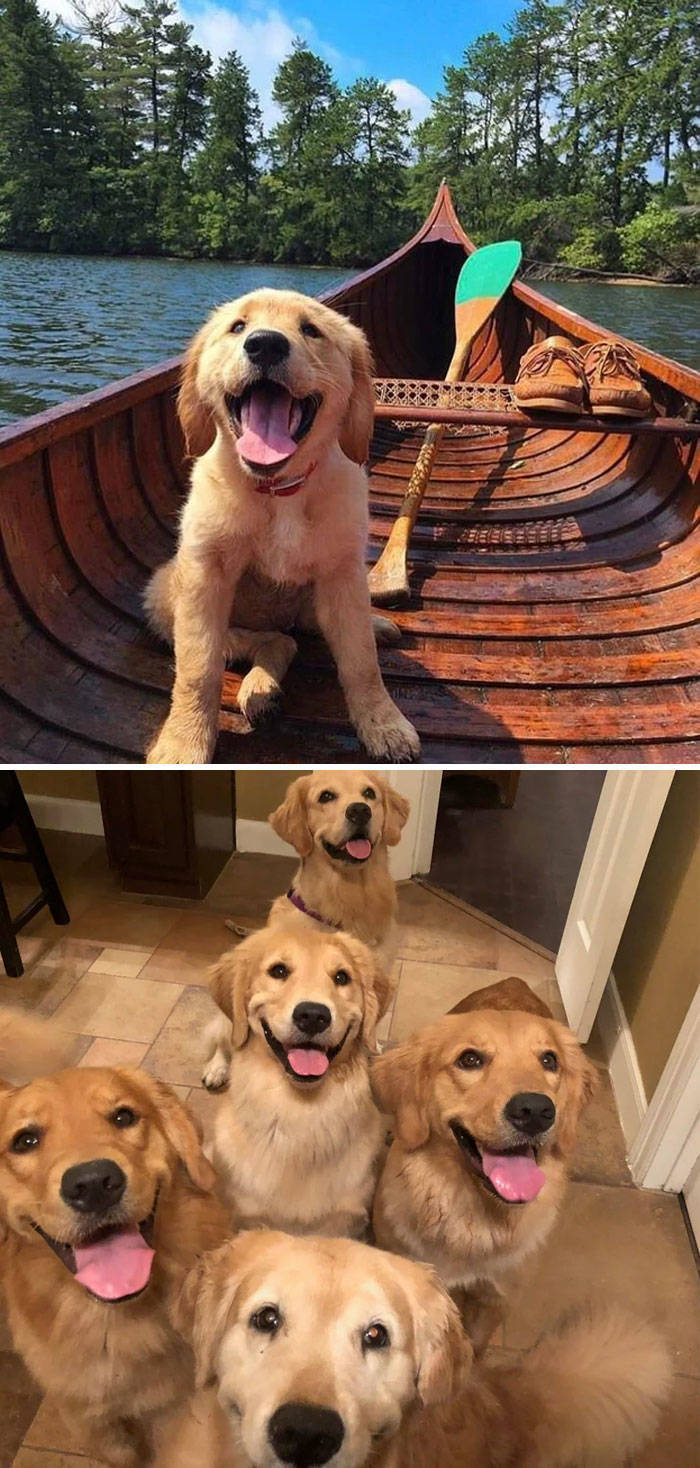
A Golden Retriever does not, in fact, retrieve precious metals, but it does have a heart of gold. Which, undoubtedly, is even more invaluable. The hallmark of this breed is indeed their character that’s often described as kind, friendly, and confident. All these character traits and their intelligence makes the Golden Retriever a perfect family pet. In addition, their eagerness to please and vast patience often sees this breed working as disability assistants, guide dogs, and search-and-rescue operation participants.
Rottweiler
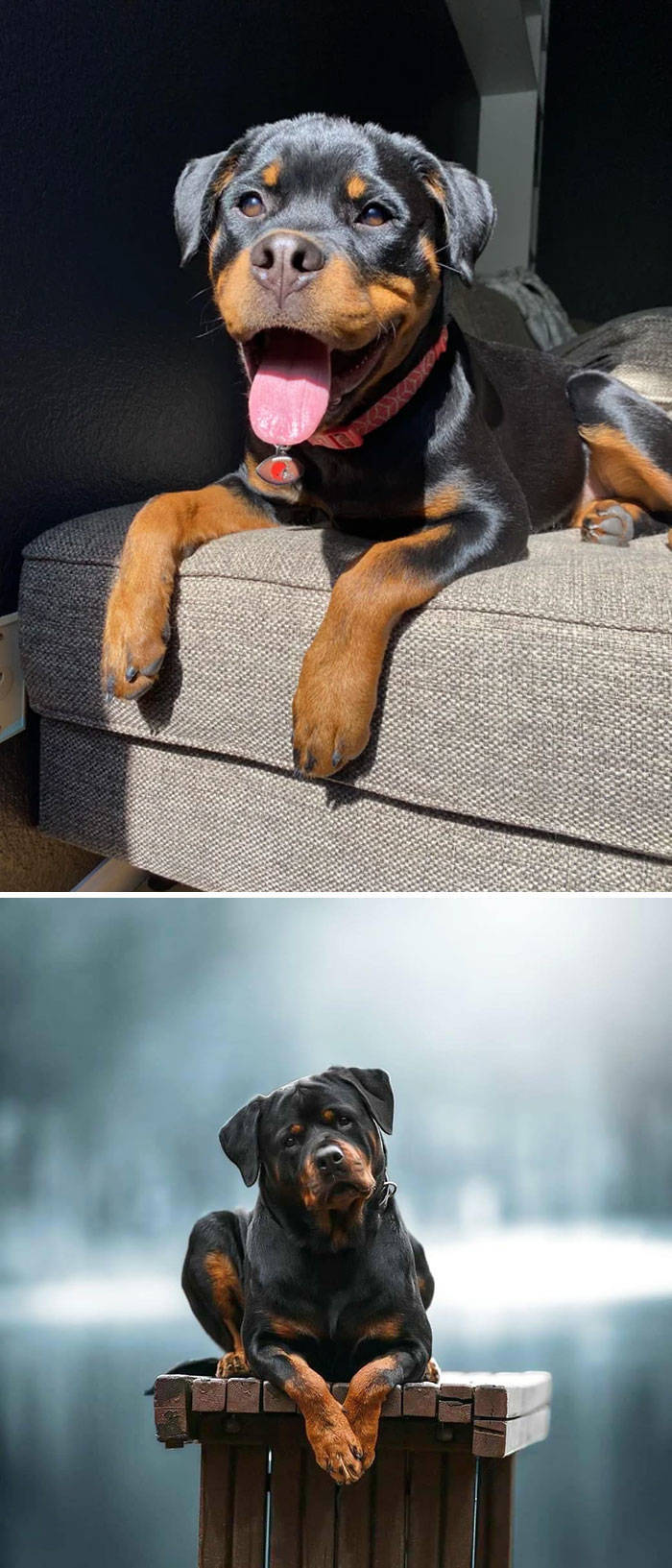
Rottweilers are one of the oldest dog breeds, known since Roman times. In the hundreds of years of this breed’s existence, the Rottweilers have been able to adapt to every century’s needs. From their original purpose as livestock herders, cart-pullers, and guard dogs to war dogs and companions, the Rottweiler is surely a very versatile breed. Interestingly, when working as herders, Rotties become quite affectionate toward their cattle as long as they do what’s directed. According to the breed standards, their temperament is good-natured, placid, devoted, and obedient while also self-assured and fearless.
Doberman Pinscher
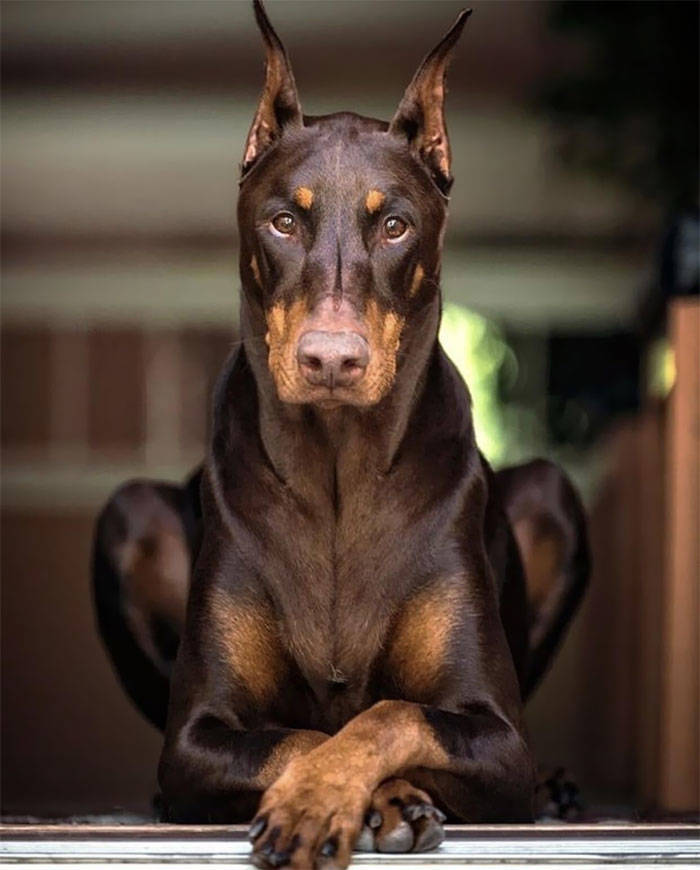
The Doberman Pinschers, ingrained into popular culture as the big, bad, Cerberus-like dogs, was coincidently developed by Karl Friedrich Louis Dobermann, a tax collector from Germany around 1880. It might be this fact and not their sleek bodies, dark coats, and incredible athleticism that made popular culture portray them as ferocious. Though known for their high intelligence, the character traits of Doberman Pinschers vary a lot between individuals. Still, even the stubborn ones can become loving and devoted companions if properly trained; some studies rank the Doberman’s trainability even higher than the Border Collie’s.
German Shepherd
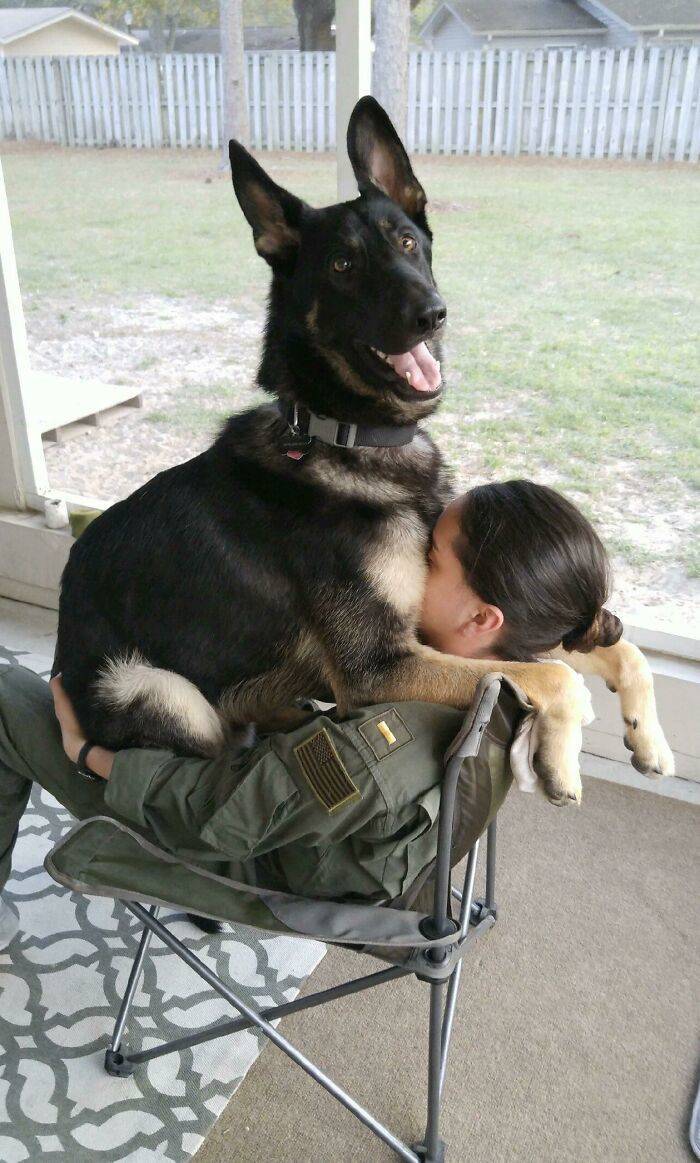
German Shepherds are a breed originating from, you guessed it, Germany and bred, you guessed it again, to work as livestock herders. Despite their wolf-like appearance, this dog breed is relatively modern, being first described in 1899. Now, German shepherds are primarily bred for their intelligence and are the number one breed to work in military and police roles, search-and-rescue operations, as disability assistants, and of course, as actors on the silver screen.
Pembroke Welsh Corgi
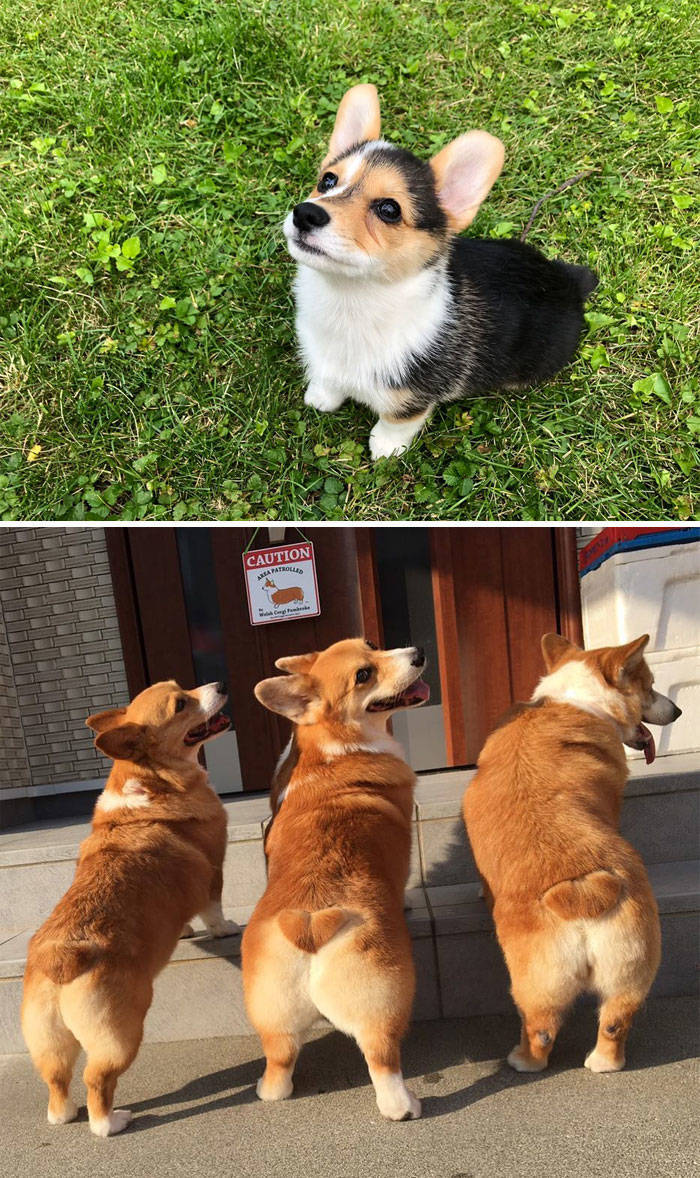
Being the Queen’s favorite is not the only thing that makes Corgis as popular as they are. This cattle herding dog breed has a huge desire to be involved in the family they live with, following the owners wherever they go. A Corgi’s eagerness to please makes them highly trainable; however, some individuals are quite stubborn, so training them might require a professional trainer’s services. The Pembroke Welsh Corgi lineage can be traced back as far as 1107 AD, but Ancient lore says the Corgis were given to people by fairies who used them as their war horses. So, you were right – the cuteness of Corgis is, undoubtedly, otherworldly.
Dachshund
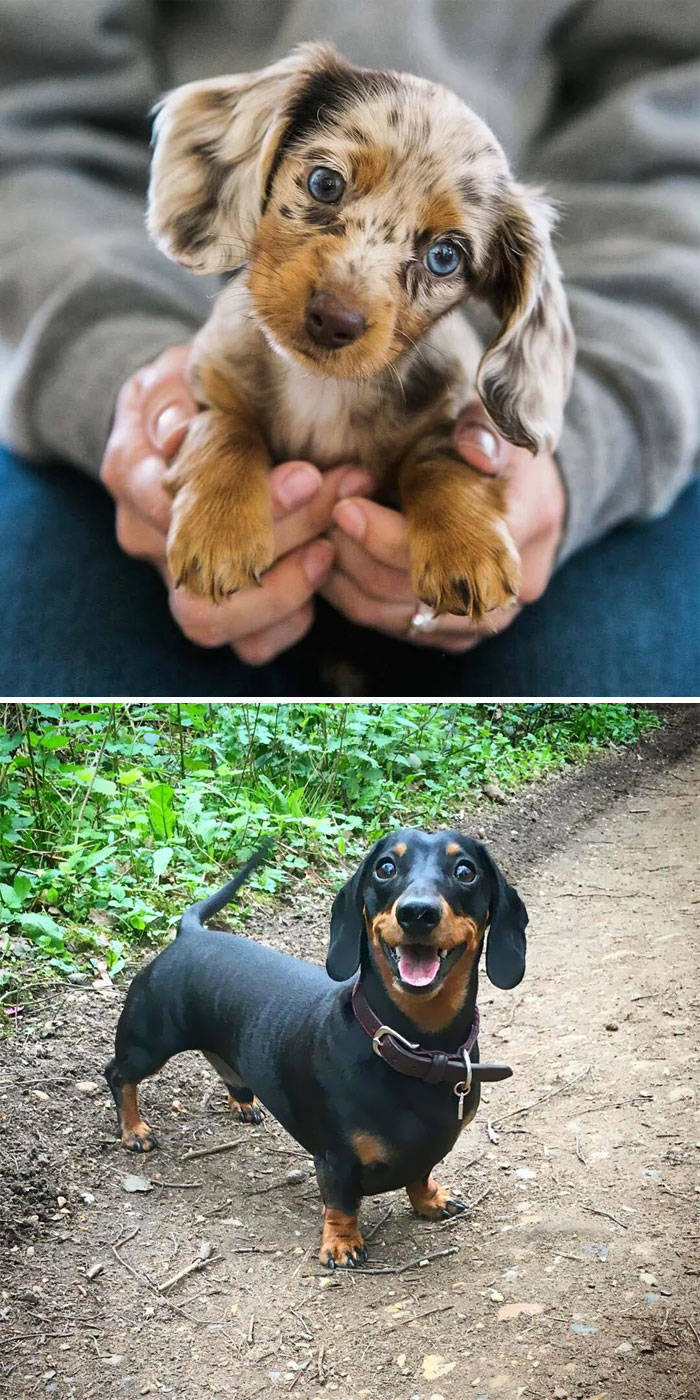
Though you might know Dachshunds as loveable and goofy hole-diggers and ball-chasers, this breed once had a particular purpose – to flush out and hunt badgers. These days, sausage dogs are mostly kept as pets and are widely adored by owners as playful, devoted, and loyal pups. However, before choosing a Dachshund as a pet, you’d have to know about their notorious stubbornness – it is best to train such a dog with help from a professional. Small, long, and shortlegged, they give the impression of a lazy couch potato-type of breed, when in fact, this breed needs a copious amount of exercise to keep them happy.
Bernese Mountain Dog
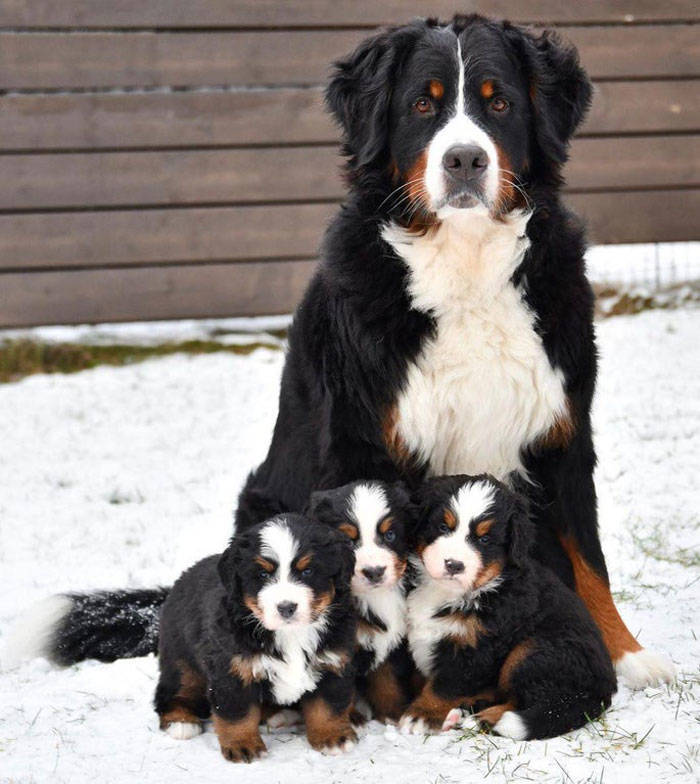
Hailing from the Swiss Alps, the Bernese Mountain Dogs were initially kept as all-around farm dogs. Nevertheless, they too did have a specific role ideally suited for their large and muscular bodies – cart pulling. Those carts were often filled with milk and cheese, thus gaining the Bernese a nickname “Cheese Dog.” Though they’re still perfectly able to pull carts, the Bernese Mountain Dog has gained wide popularity as a good-natured, docile, and kid-friendly pet. The Bernese, not precisely a high-maintenance dog, still needs brushing once a week due to their long coat and year-round shedding. But, before falling in love with a Bernese pup, there’s one detail you should know about their life expectancy, as these dogs average only about 7-8 years of life.
Labrador Retriever
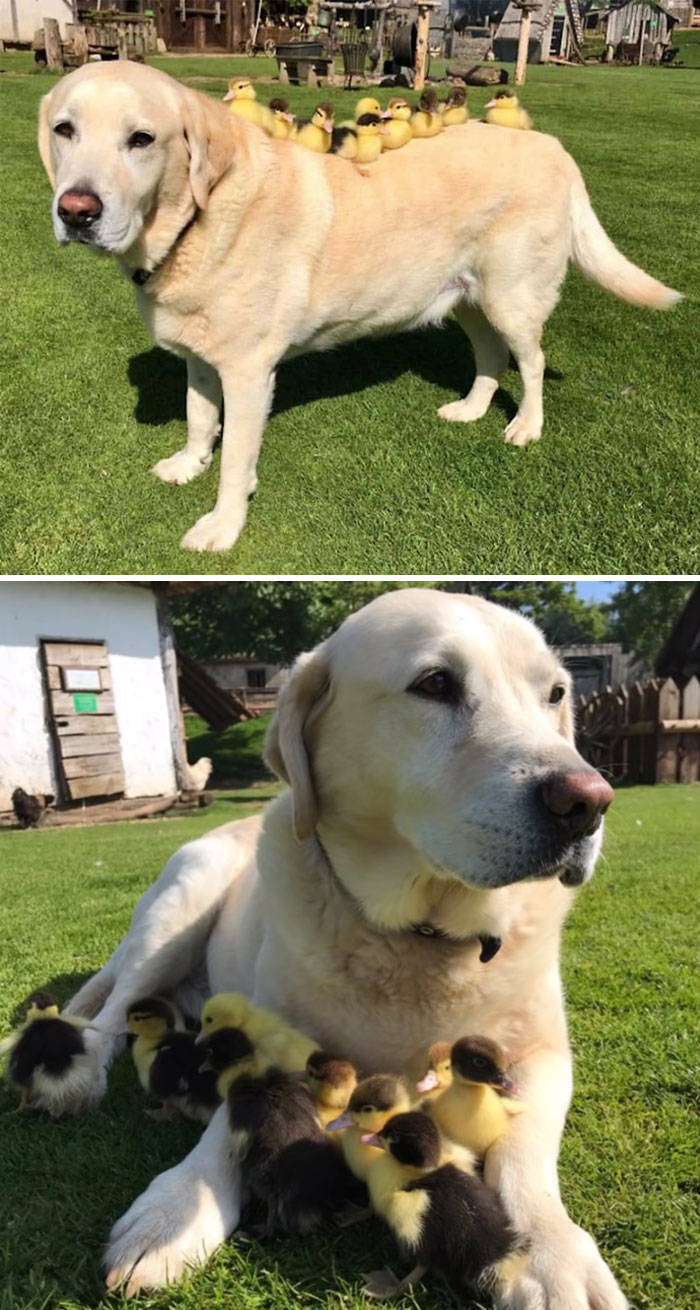
No other dog breed is as popular as the Labrador Retriever – it has been ranked as the number one breed to be kept as pets worldwide. Though Labradors have been bred as retriever-gun dogs (dogs used to aid hunters by retrieving game), their friendliness, warm character, patience, high trainability, and incredible sense of smell have solidified Labs as the top choice for many roles. From working as guide dogs and therapy dogs to serving in the military and police, there’s nothing that the lovable Labrador Retriever can’t do.
Belgian Tervuren
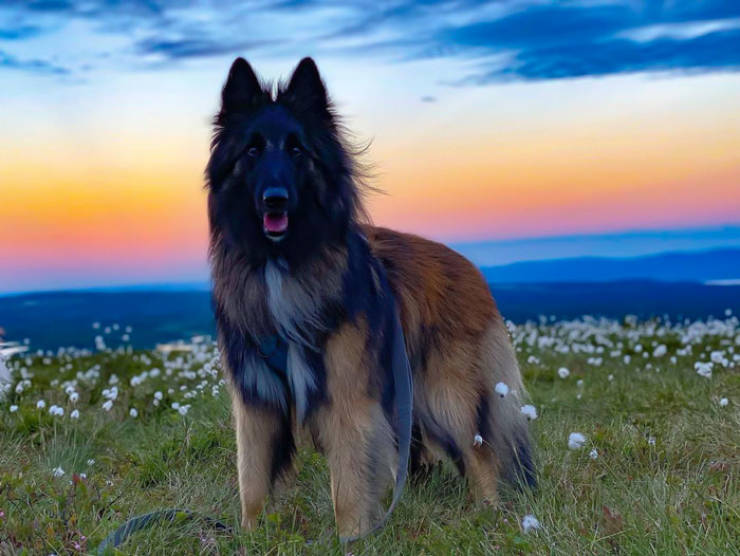
The Belgian Shepherd, while predominantly considered a single breed, has four varieties based on coat type and color. Those varieties are the long-haired black Groenendael, the rough-haired fawn Laekenois, the short-haired fawn Malinois, and the long-haired fawn Tervuren, with Groenendael and Tervuren being the most popular of the four. Though the Belgian Shepherd’s historical role was that of a herding dog, the breed has been used as assistance dogs, companion dogs, guide dogs, police dogs, and everything in between. The individuals are highly intelligent, alert, and sensitive, yet due to their high energy levels and strong will, they need to start their training at a young age.
Pomeranian

Don’t be fooled by the fragile looks of this fluffy cloud of joy – Pomeranians, despite their lack of size, are very sturdy dogs with few health problems and huge personalities to make up for their diminutive stature. Hailing from the Pomerania region in northwest Poland and northeast Germany, this breed has been royalty’s favorite since the 18th century. Even Queen Victoria had one of her own! Pomeranians love to be the center of attention and are typically very friendly, lively, and playful. And though they’re tiny, these dogs will protect their territory by barking fiercely. Intelligent and trainable, Pomeranians are perfect for keeping in an apartment, as they don’t need much exercise.
Keeshond
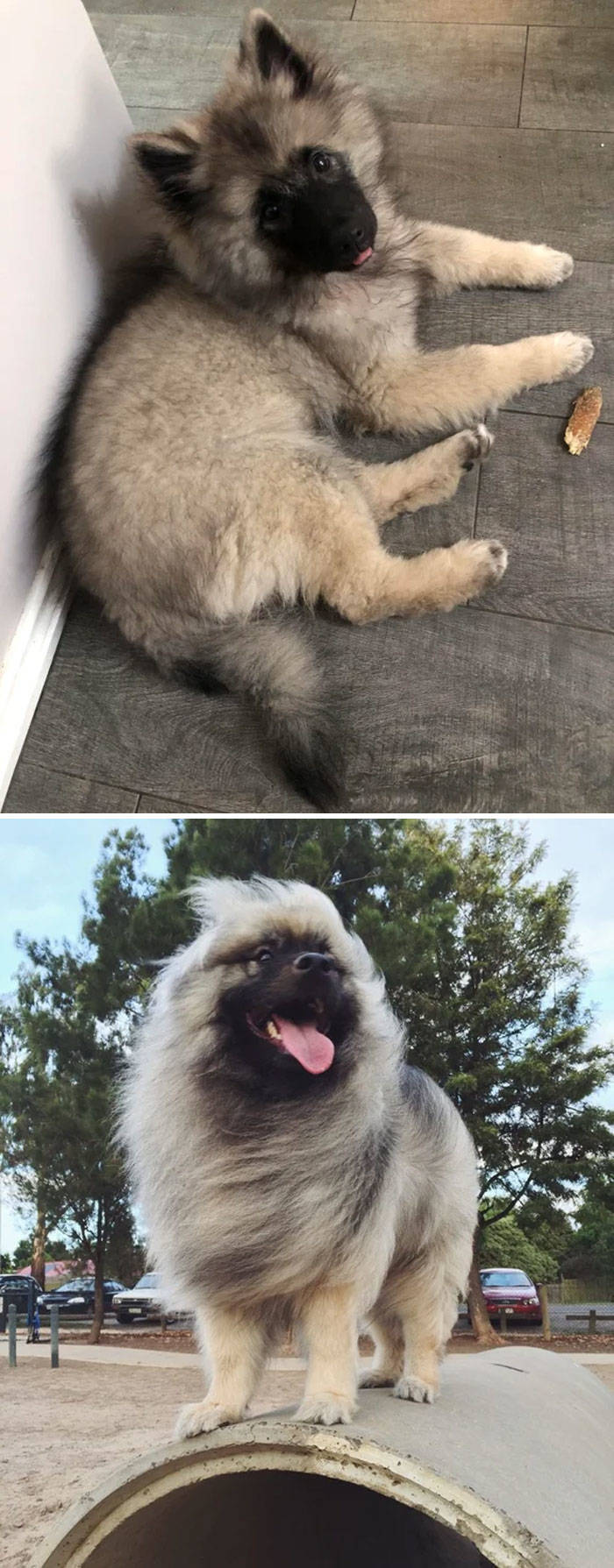
This adorable silver fluff, known as the Keeshond, hails from Holland and is closely related to the German Spitzes. Previously known as the Dutch Barge Dog, this breed was a symbol of the Patriotic faction in the Netherlands during political unrest in the 18th century. Keeshonden, being incredibly quick learners, might learn things their owner didn’t intend to teach them. Besides being highly intelligent, these dogs are also very intuitive and empathetic, thus are often used as comfort or therapy dogs.
Australian Cattle Dog
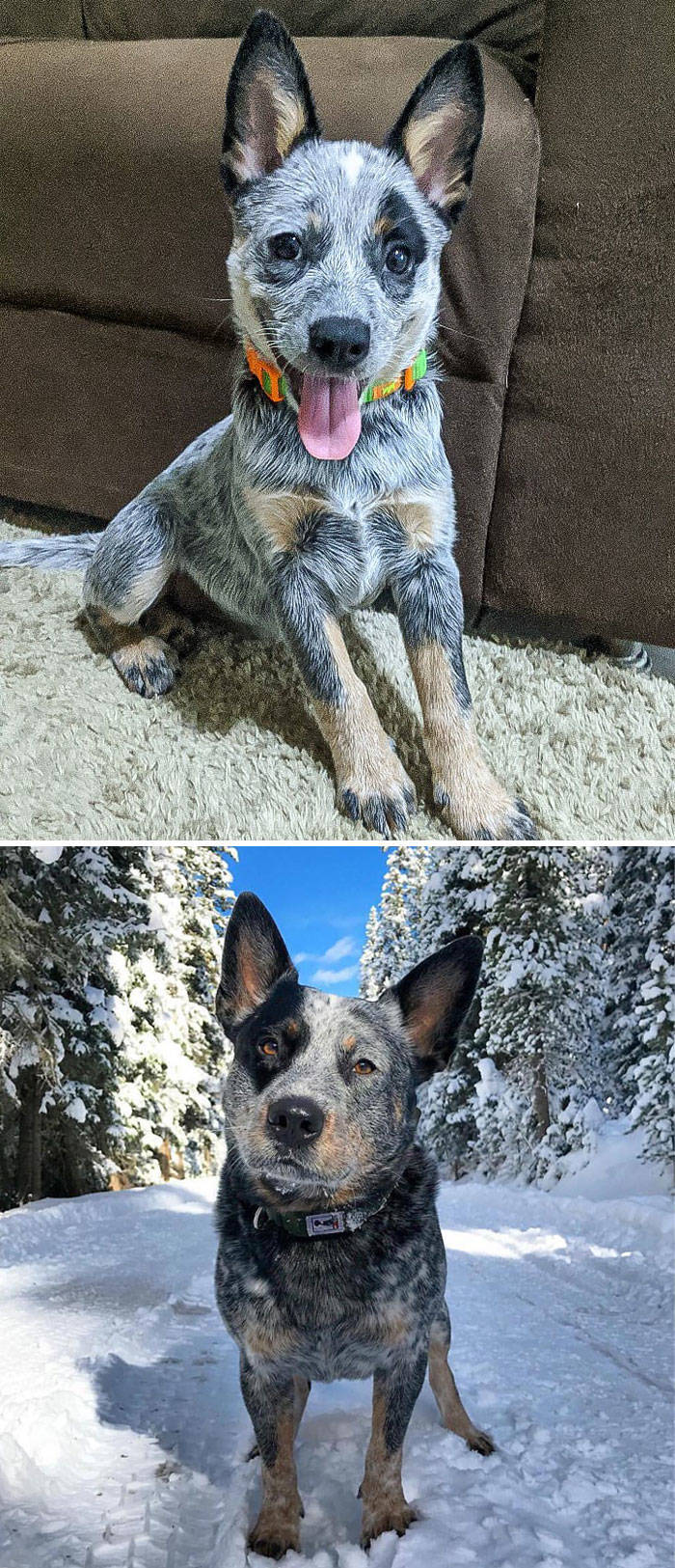
As with most working dog breeds, the Australian Cattle Dog is energetic and highly intelligent with an independent streak. Though this breed responds very well to structured training, it has to be interesting and challenging. Bred to herd cattle by biting and nipping, the Australian Cattle Dog also employs this technique herding running kids. Perfect for patrolling the school halls, right? If you’d like to own an individual of this breed for purposes other than herding, be sure to engage your puppy in activities that occupy the mind and expend their energy. Dog sports, learning tricks, or canicross might be your best bets.
Miniature Schnauzer

The Miniature Schnauzer – German for ‘snouter’ – has been bred as an all-rounder farm dog. Though the bigger Schnauzers are known for their guarding and herding abilities, the Miniature Schnauzer specializes as a ratting dog, efficiently catching rats and mice. Usually easy to train, these dogs are alert, obedient, intelligent, and always willing to please their owners. Miniature Schnauzers are highly playful, and if not given an outlet for their energy, they will surely invent their own fun, which might translate into chewed slippers.
Australian Shepherd
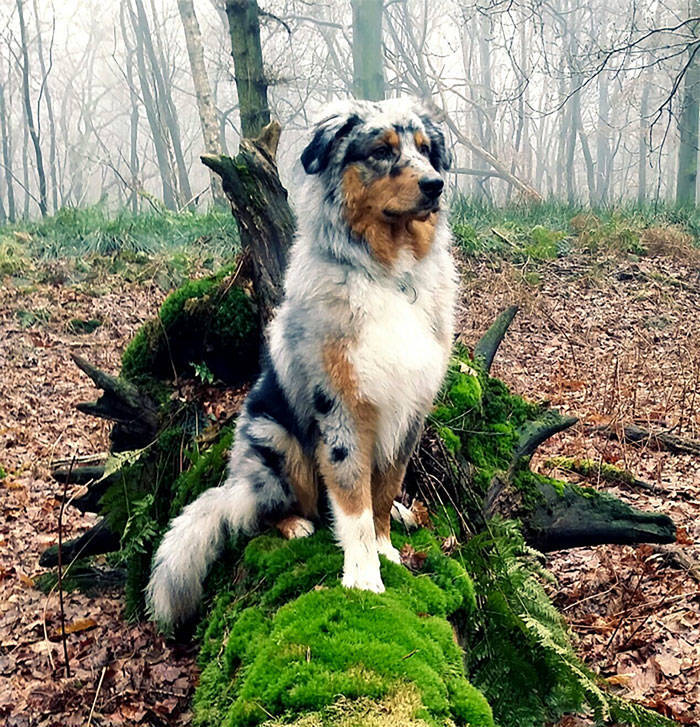
Named Australian Shepherd, this breed was actually developed in the United States in the 19th century. Australian Shepherds most likely hail from collies imported to California along with sheep from Australia and New Zealand, hence the name. For more than a hundred years, this breed was relatively unknown outside the livestock industry, where these dogs proved invaluable to ranchers. Only in the mid-20th century, after a rodeo performer, Jay Lister wowed the crowds with his Australian Shepherds performing various tricks, this breed became popular as pets. As of now, this breed is one of the top 15 breeds in the United States. And no wonder – Australian Shepherds are widely known for their intelligence, playfulness, and loyalty – traits perfect for companion dogs. And though Australian Shepherds are mainly bred as pets, they still have a strong instinct to herd, which they might demonstrate by herding other pets or children.
Schipperke
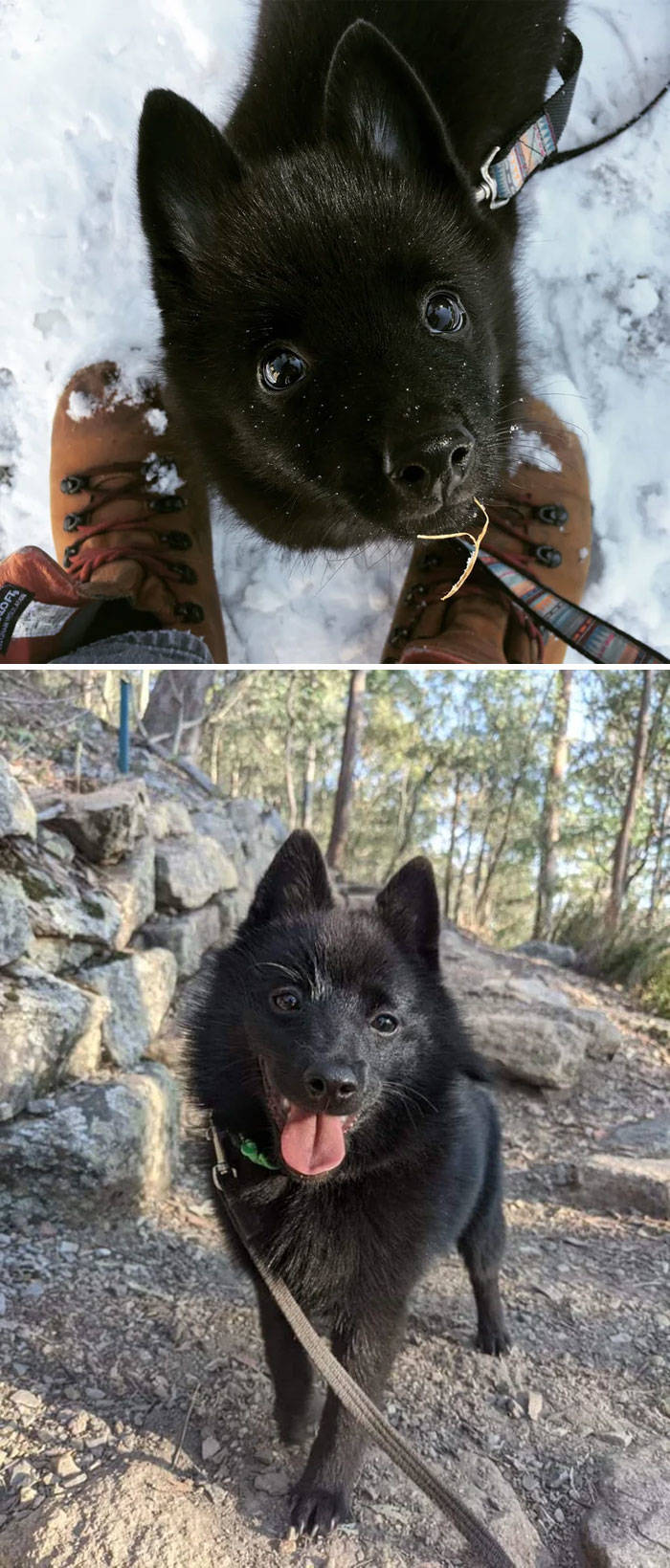
There has been a long informal debate over whether the Schipperke is a sheepdog or a spitz; nonetheless, this breed is considered a miniature sheepdog in its country of origin, Belgium. Due to their headstrong, stubborn, and mischievous temperament, the Schipperkes are often called ‘little black devils.’ Besides these impish character traits, the individuals of this breed are very smart and independent, known to debate listening to their owners, and choosing to act most beneficially. They often have a high prey drive fixated on small animals and excel at obedience and agility competitions.
Puli
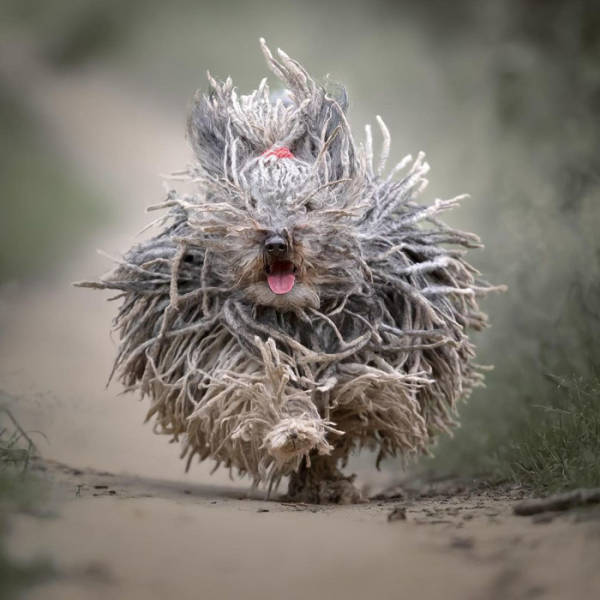
The tough little cord-haired Puli comes from Hungary, where it was bred for herding and livestock guarding duties. Though their dense, thick coats give a deceptive image of Pulik being stocky and clumsy, they’re actually very agile, highly energetic dogs suitable for many activities and sports. Known for their loyalty, obedience, determination, and intelligence, Puli make great contenders in agility, obedience, herding, and many more events. Though many owners are tempted to own such a fun-loving puppy, Pulik feel the best when spending most of their time outside, engaged in various activities. If kept in small apartments with little exercise, they grow restless and hyperactive, or instead, lazy and aloof.
Collie
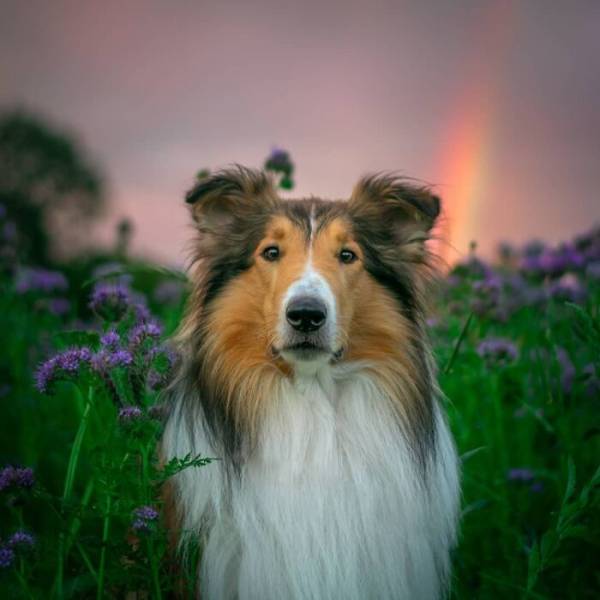
Collies are a distinctive type of herding dog with many varieties spread throughout the world. The most famous Collie was, without a doubt, Lassie, which, despite being a fictional dog, depicted the breed characteristics perfectly. They’re very agile, active, sensitive, aware of the owner’s emotions, and often intensely loyal. Of almost twenty Collie varieties, most of them have a powerful herding instinct and need a copious amount of exercise. And while working types of Collies are better suited for various sports and activities, the show and pet types will gladly live more sedentary lifestyles, accustoming themselves to the needs of their owners.
English Springer Spaniel

The English Springer Spaniel is a dog breed traditionally used for flushing and retrieving game, but due to their excellent sense of smell, they are also used as sniffers or detection dogs. Besides sniffing out explosives, the English Springer Spaniel can accustom its nose to the scent of bumblebee nests and blood. The typical Spaniel is eager to please, friendly, highly trainable, and willing to obey its owners. They are also known to stick to their favorite person as much as possible, thus gaining them the nickname ‘velcro dog.’ A Spaniel’s exceptional stamina and willingness to work make them an excellent choice for search-and-rescue operations.
Standard Poodle
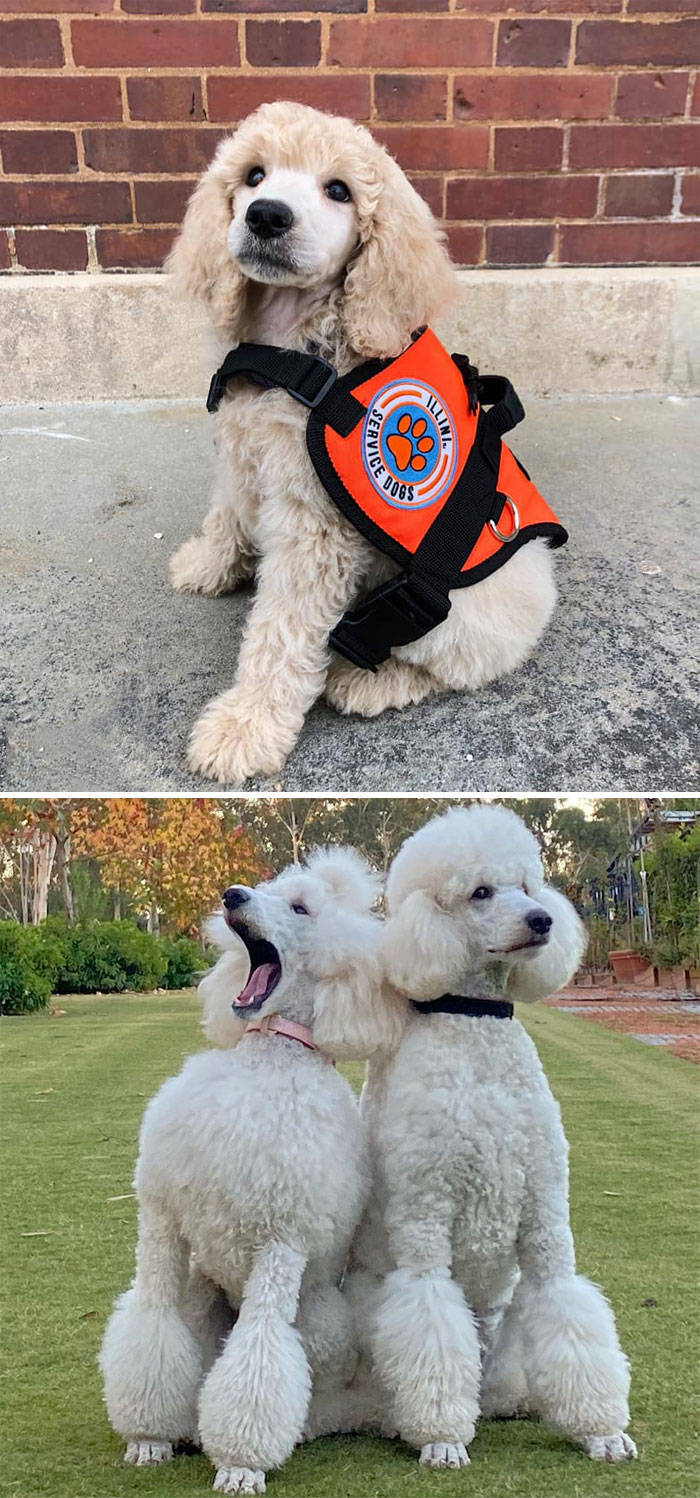
The royalty of dogs, His Highness the Poodle comes very close to being the top-dog on the list of the smartest dog breeds. Though up to this day, cynologists aren’t sure whether this type of water dog (a dog that hunts waterfowl) originated from Germany or France, there’s no doubt that they’ve won us over with their loyalty, intelligence, and gentleness. These puppies are versatile in sports, as working dogs and emotional support pets, but besides all that, they also have one trait that few other breeds have – they are known to be hypoallergenic. A quality that’s undeniably important for those allergic to dog dander.
Belgian Malinois
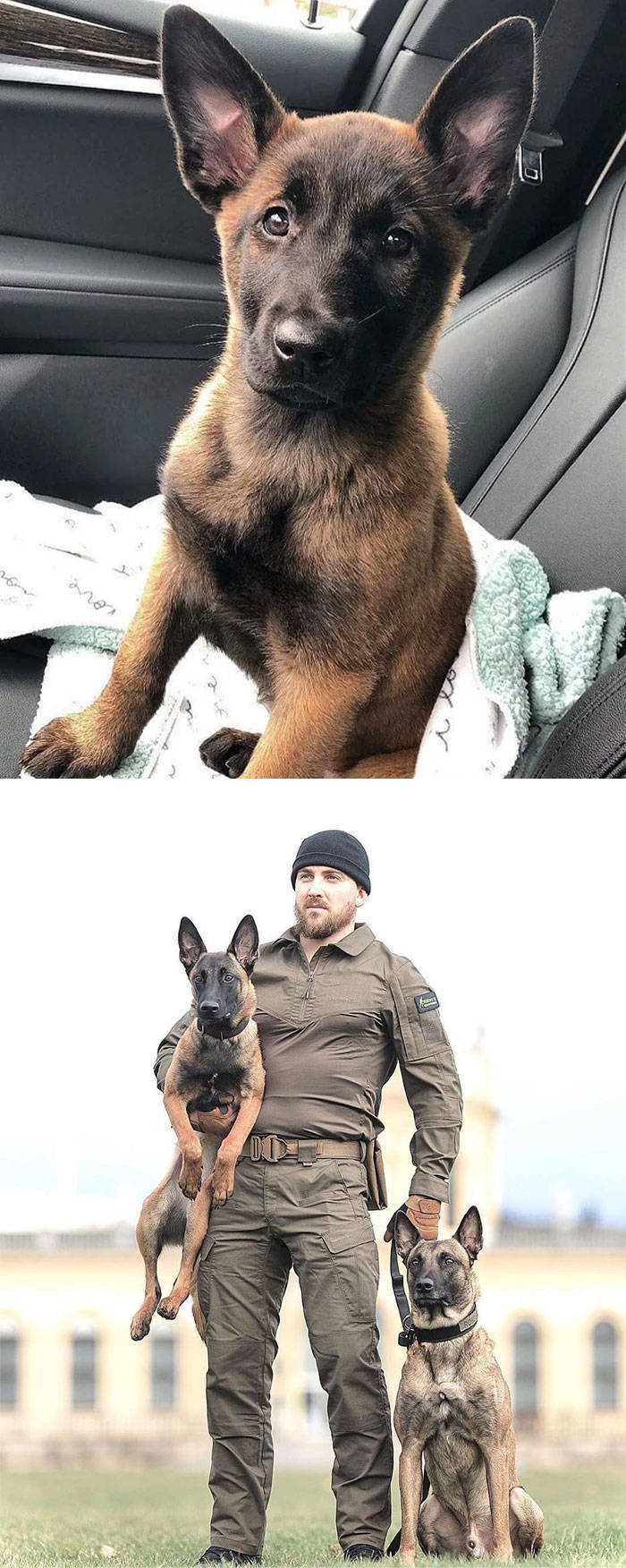
The Belgian Shepherd, while predominantly considered a single breed, has four varieties based on coat type and color. Those varieties are the long-haired black Groenendael, the rough-haired fawn Laekenois, the short-haired fawn Malinois, and the long-haired fawn Tervuren, with Groenendael and Tervuren being the most popular of the four. Though the Belgian Shepherd’s historical role was that of a herding dog, the breed has been used as assistance dogs, companion dogs, guide dogs, police dogs, and everything in between. The individuals are highly intelligent, alert, and sensitive, yet due to their high energy levels and strong will, they need to start their training at a young age.
Shetland Sheepdog
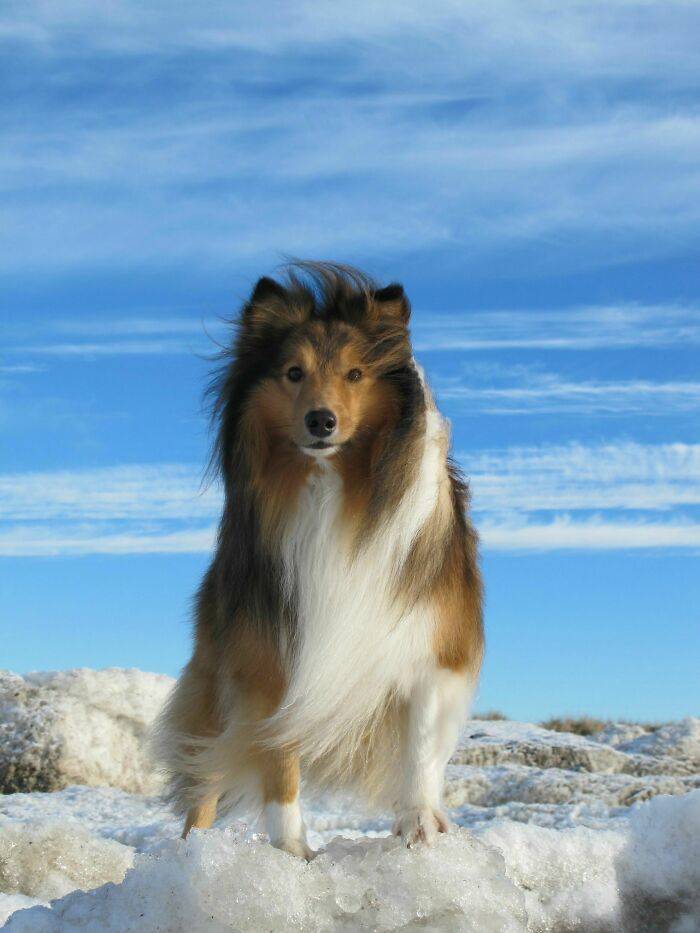
The Shetland Sheepdog, also known as Sheltie, is a herding dog breed. And as with everything that comes from the Scottish Shetland Islands – ponies, cattle, and sheep – Shelties are diminutive in their size but hardy in their disposition. It’s a common misconception that Shetland Sheepdogs are a smaller version of the Rough Collie, when in fact, Shelties are more related to Spitzes than any other breed. Individuals of the Shetland Sheepdog breed are highly intelligent, learning new commands after less than five repetitions. Shelties are also incredibly loyal, affectionate, and gentle – qualities perfect for therapy dogs.
Weimaraner
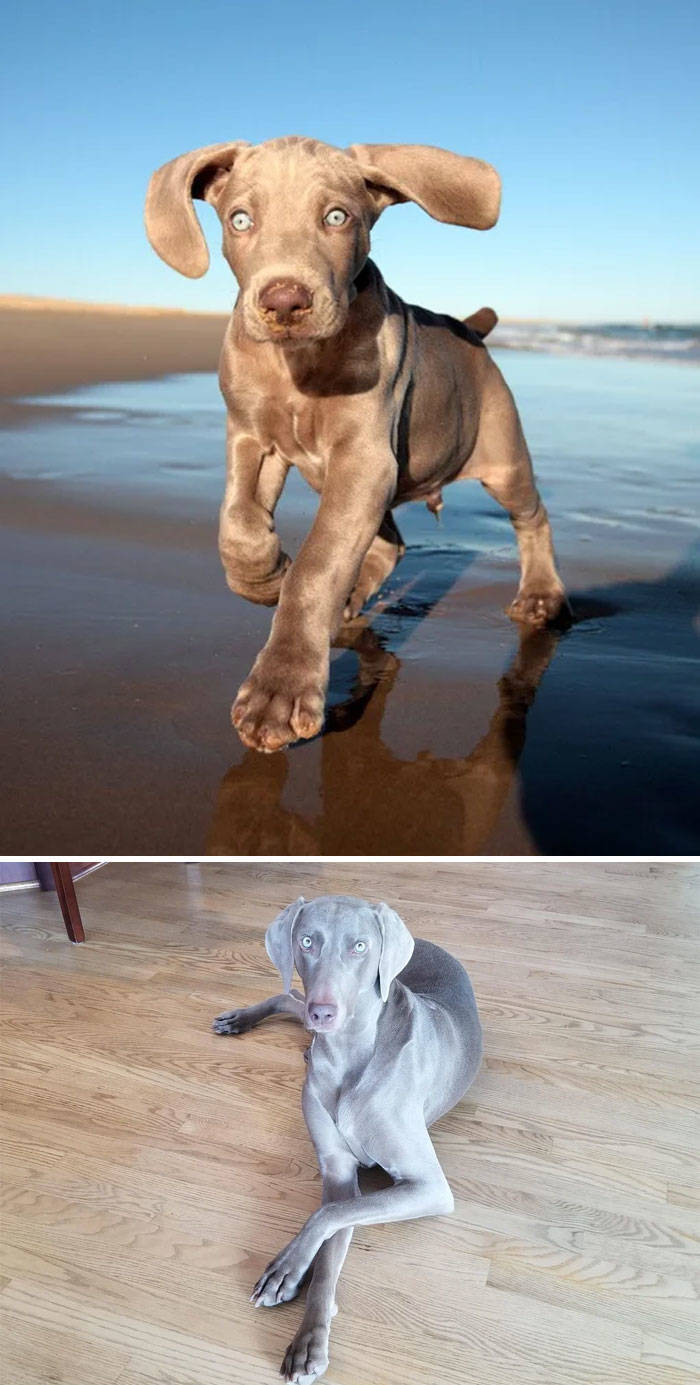
The Weimaraner, a gun dog breed developed in the early 19th century in Germany, was favored by royalty for its stunning looks, athleticism, and intelligence. Once used to hunt big-game like wolves, bears, and mountain lions, they now excel in various dog sports. However, being highly energetic and intelligent, the Weimaraner needs proper training to learn how to be calm and control its high prey drive. In addition, this dog breed is very people-oriented and might develop severe separation anxiety if its needs are not met. But, overall, the Weimaraners make great, loyal, and obedient pets for active owners.
English Cocker Spaniel
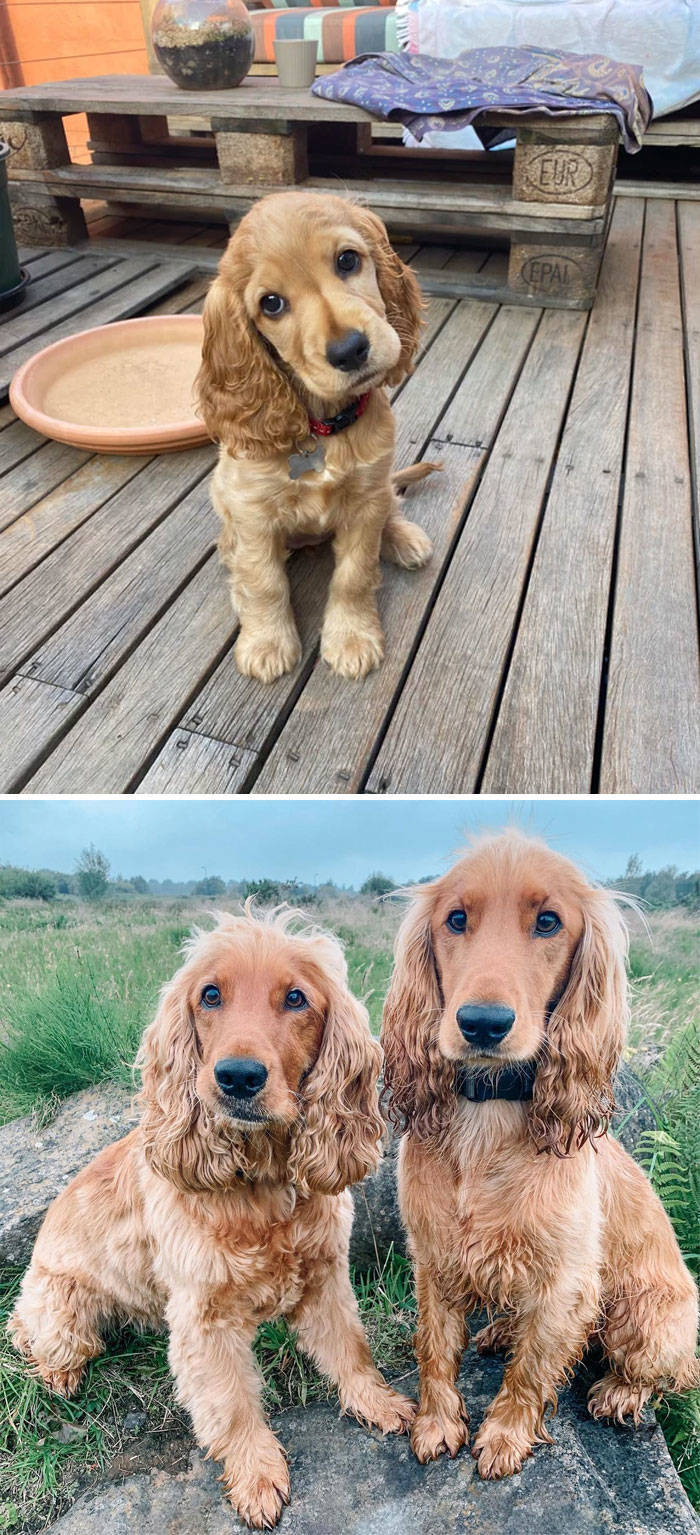
Spaniel-type dogs have been known for at least 500 years, although the first studbooks for the English Cocker Spaniel breed were registered much later in 1874. Bred to be a gun dog, the Cocker Spaniel soon gained popularity outside hunting for its intelligence, kindness, and athleticism. Also, Spaniels seem to be always wagging their tails out of happiness, thus earning them the nickname ‘merry cocker.’ Cocker Spaniels get along well with people, kids, and other pets but need a soft hand and loads of praise when trained. While they are excellent working dogs, the ‘house’-bred Cockers also make for incredibly great family pets.
Vizsla
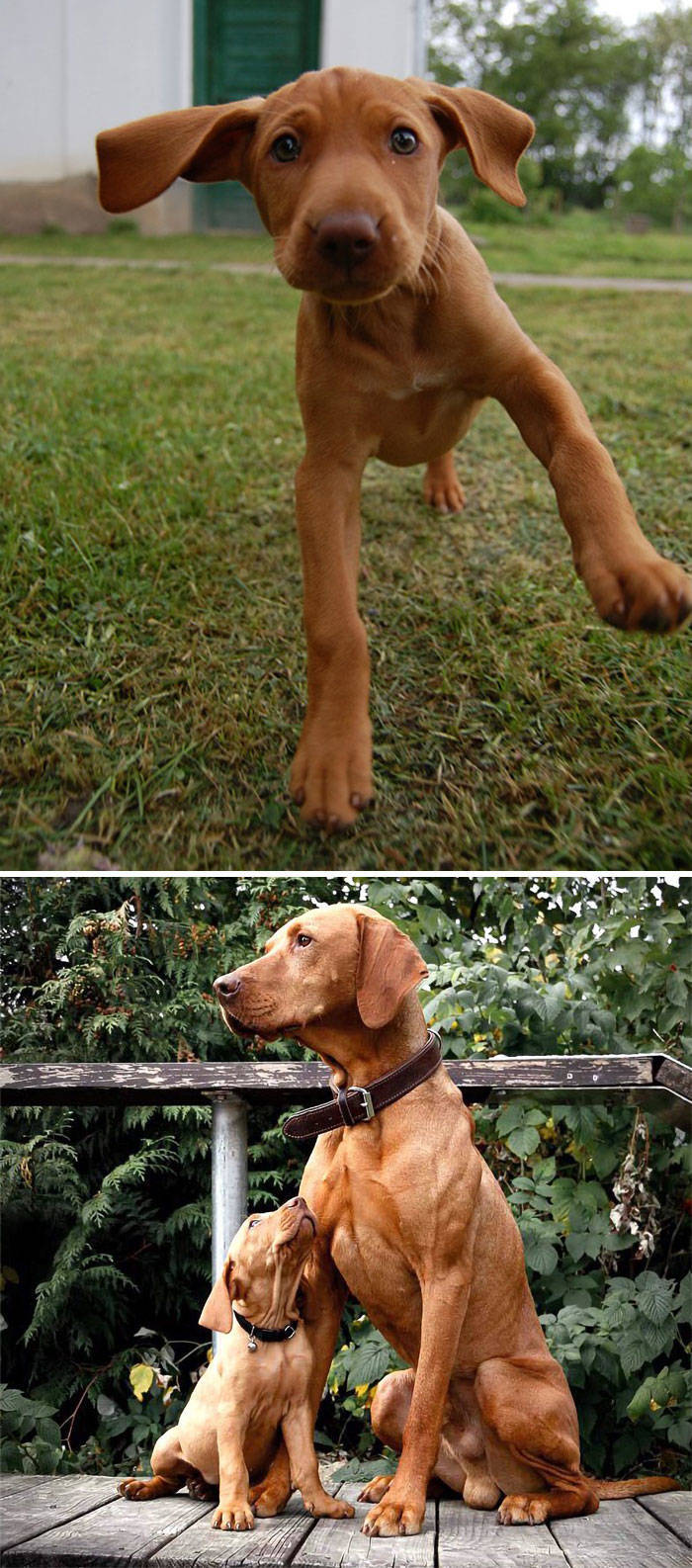
The Vizsla, another dog from Hungary on our list, is a hunting dog breed first officially mentioned as early as 1357. This breed’s lively, gentle-mannered, intelligent, and sensitive temperament makes them great companions and family pets. Vizslas thrive on attention, exercise, and interaction, thus needing a lot of mental stimulation, especially when young. However, with proper training and socialization, this breed is very gentle and careful with kids, though a supervising adult should always be present as with any other dog breed. In addition, Vizslas like to spend as much time as possible with their owners. Even when sleeping, they often try to get cozy under the covers in their owner’s bed.
German Shorthaired Pointer
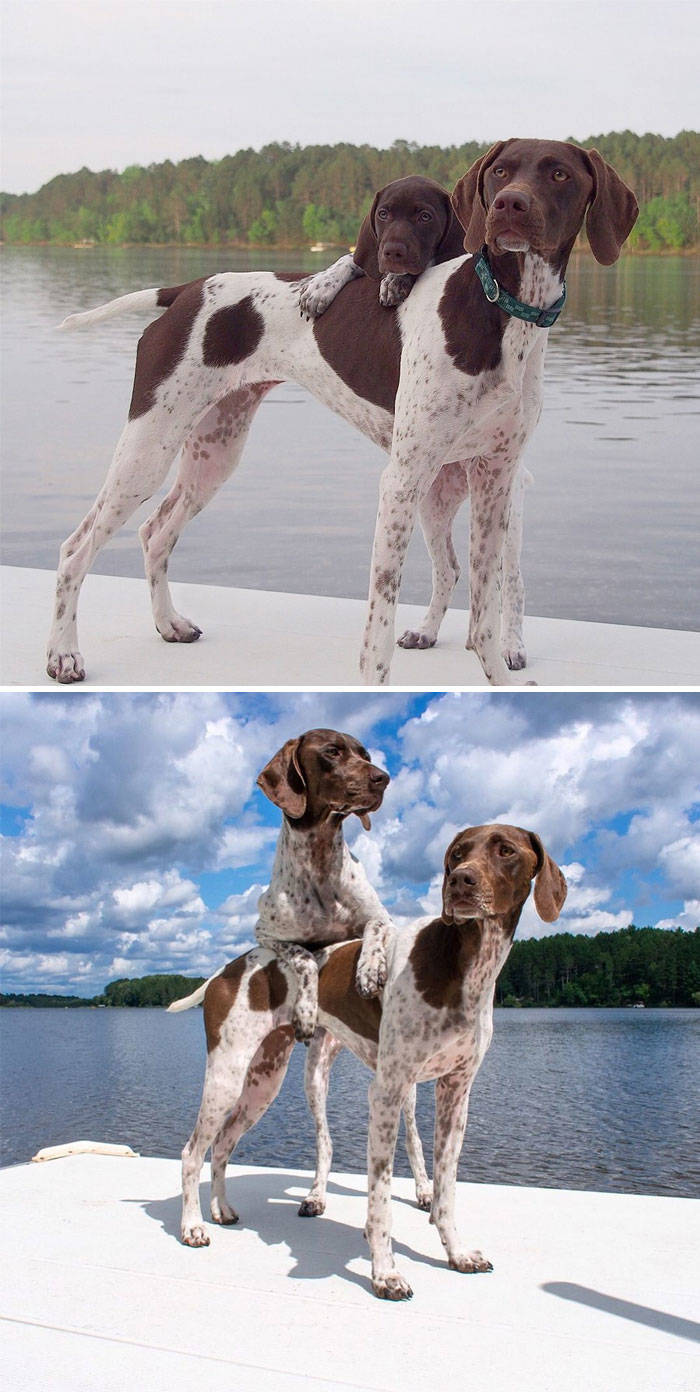
The German Shorthaired Pointer is a versatile hunting dog breed developed in the 19th century in Germany. Though this breed retains a strong drive to find and chase prey, their high trainability and energy levels make them great contestants in various dog sports. Although the German Shorthaired Pointers are commonly known to be intelligent, boisterous, and a little bit eccentric, the temperament of these dogs can be affected by heredity, training, and socialization. These Pointers do need a copious amount of exercise and can develop destructive behavior tendencies if not given an appropriate amount.
Brittany Spaniel
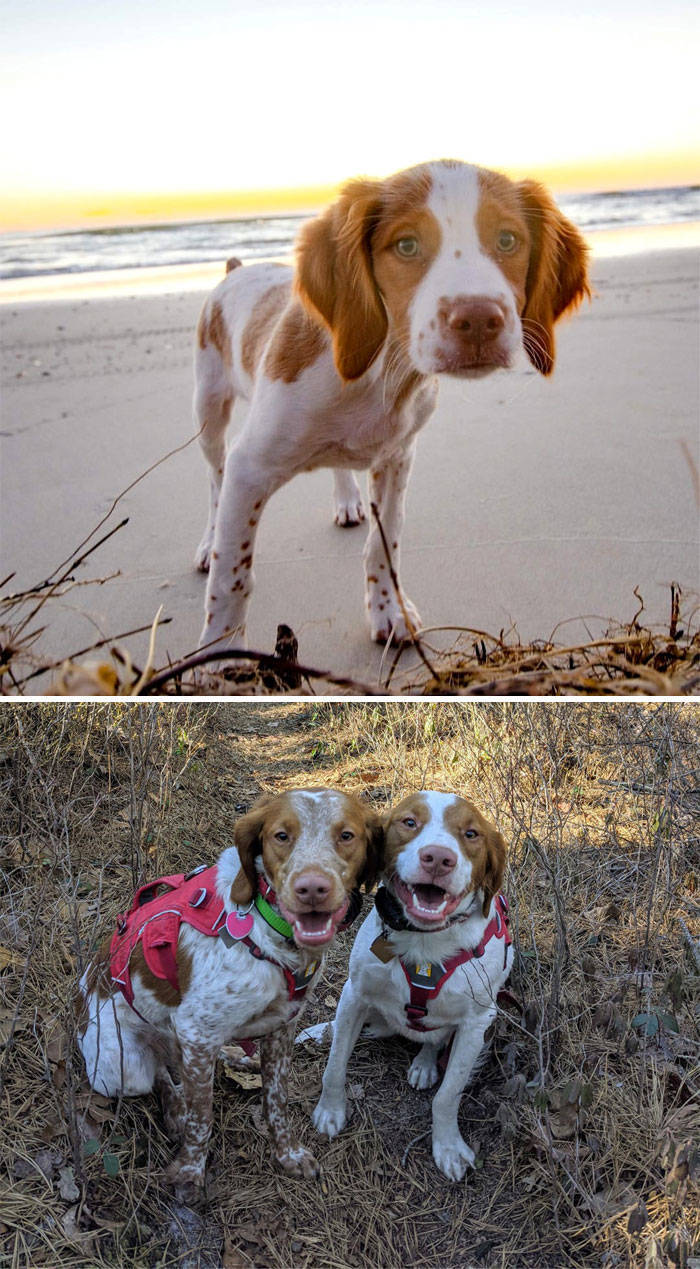
Brittany Spaniels, who aren’t really spaniels but rather pointing and setting gun dogs, were developed in Brittany, a northwest province of France. Though tapestries dating the 17th-century depict Brittany-like dogs, this breed was officially recognized by the early 20th century. Brittanys are known for their easy-to-train and sweet-natured temperaments and are generally more sensitive to corrections than any other hunting dog breed. These dogs are highly energetic and need at least an hour of vigorous exercise daily. If their activity levels are met, they are the perfect family dogs – always friendly and willing to please.
Himalayan Sheepdog
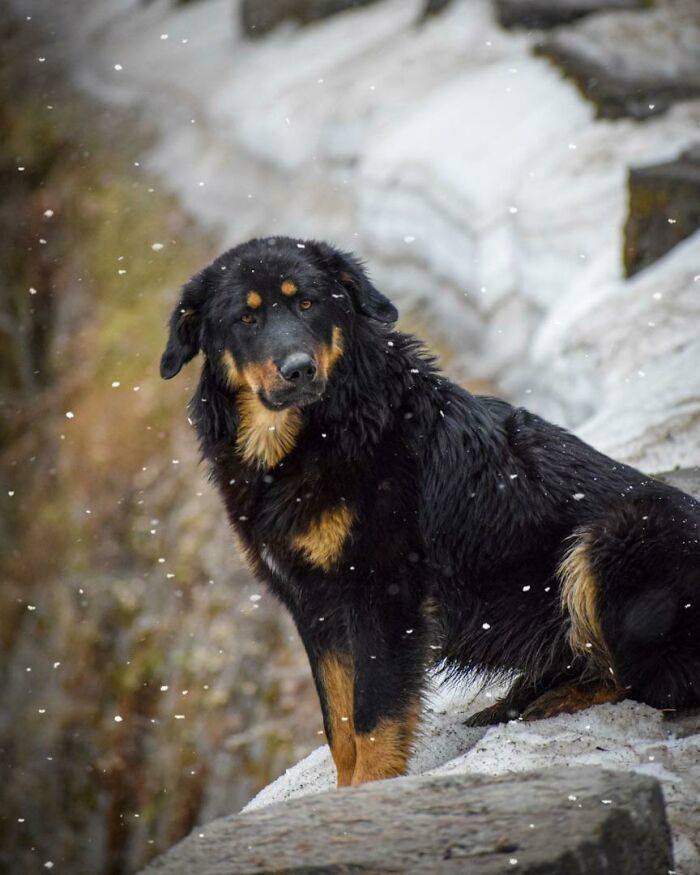
The Himalayan Sheepdog, also sometimes called Himalayan Mastiff, is primarily used as a livestock and property guardian, also assisting in herding and hunting. This large breed dog makes a great companion, being very affectionate and loyal. But, because the Himalayan Sheepdog is a very active breed, they aren’t suitable to live in an apartment – these dogs need daily fulfillment of their strong wanderlust. In addition, Himalayan Sheepdogs take their role as family protectors very seriously; thus, they can become quite ferocious without proper training.
Chesapeake Bay Retriever
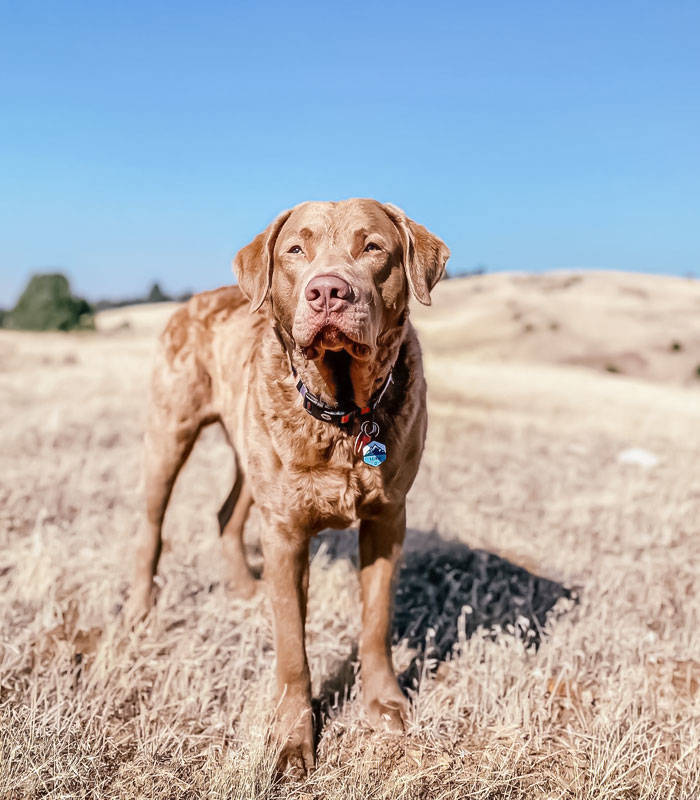
The Chesapeake Bay Retriever, developed in the United States during the 19th century, was historically used for hunting, pulling fishnets, and rescuing fishers. This breed is known for its happy disposition, intelligence, and affection towards people. Some dogs tend to be quite vocal when happy, and some will ‘smile’ in a peculiar grin typical to the Chesapeake Bay Retrievers. In addition, due to their intelligence and high trainability, this breed excels in various activities like hunt tests, obedience, agility, and tracking. All in all, this breed is a perfect pet for active families looking for an affectionate dog.
Flat Coated Retriever
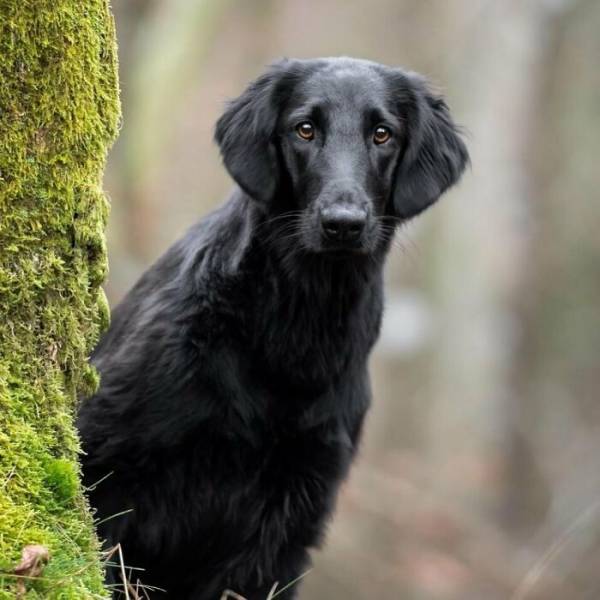
Originating in the mid 19th century in England, the Flat-coated Retriever quickly gained its popularity as a gun dog. However, this breed’s desire to please its owners, vitality, and confidence makes it a perfect family dog. As loving as they are, Flat-coated Retrievers are good companions to children, though as with any other dog, an adult should always supervise these interactions. Their excellent sense of smell allows them to work as drug-sniffer dogs, while their intelligence and warm disposition make them suitable for guide and therapy dog roles.
 Barnorama All Fun In The Barn
Barnorama All Fun In The Barn